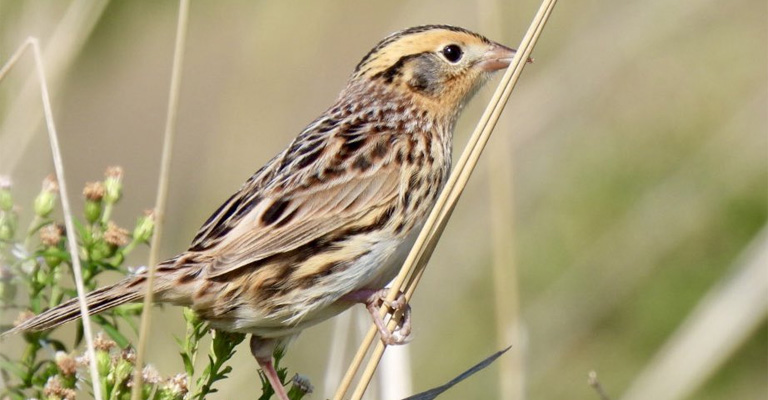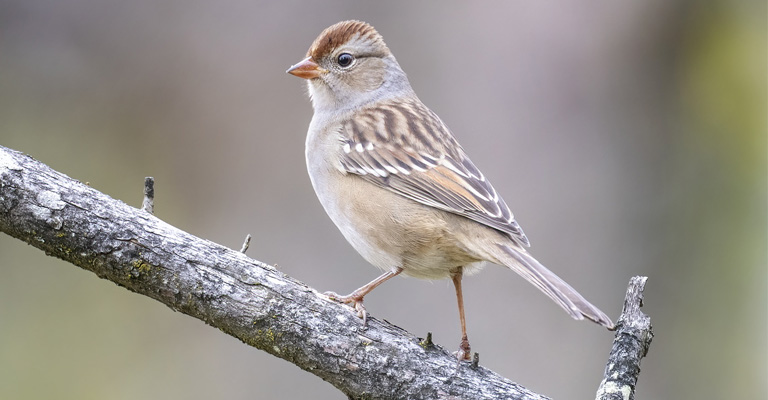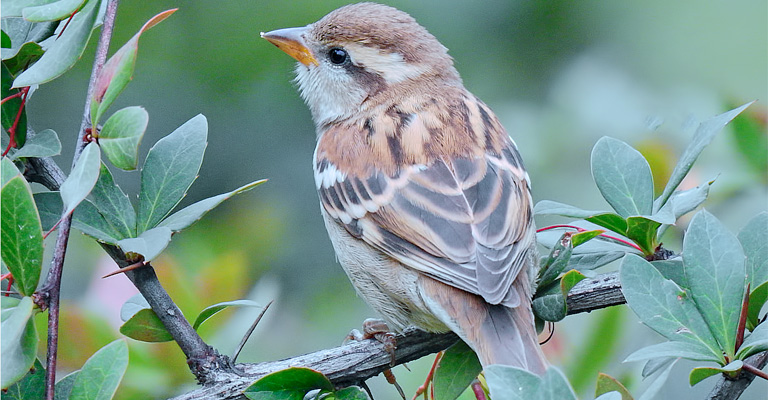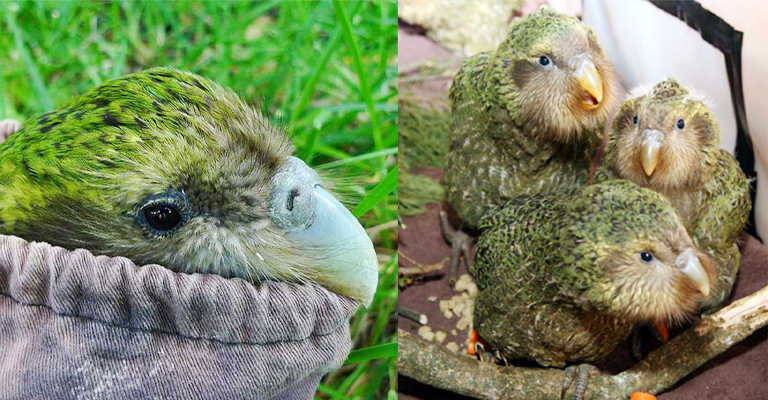The Sparrow, often regarded as a symbol of commonality and familiarity, is a small bird that has shared our urban and rural landscapes for generations. However, in recent years, concerns have arisen regarding the decline of some sparrow species.
The question, “Is the sparrow an endangered bird?” prompts us to explore the status of these feathered companions that have accompanied humanity throughout its history.
While sparrows, as a family, are not generally considered endangered, specific species may face localized threats and population declines.
Understanding the factors contributing to these declines and how we can support their conservation efforts is vital to ensuring sparrows continue to thrive alongside us.

Is The Sparrow An Endangered Bird?
The term “sparrow” refers to a broad group of small, passerine birds that belong to the family Passeridae, and it includes numerous species found all over the world.
While some specific sparrow species may face localized threats or declining populations, sparrows, as a family, are not generally considered endangered. In fact, many sparrow species are abundant and well-adapted to a variety of habitats, including urban areas.
However, it’s important to note that some factors, such as habitat loss due to urbanization and agriculture, can negatively impact certain sparrow species. Additionally, regional conservation efforts may focus on specific sparrow species that face localized threats.
Still, as a whole, the sparrow family remains diverse and widespread, with many species thriving in a range of environments. Conservation efforts often target more endangered bird species, while sparrows continue to be a common and resilient presence in many parts of the world.
Why Is The Sparrow An Endangered Bird?

Sparrows, as a family, are not generally considered endangered; however, specific sparrow species may face threats or declining populations due to various reasons. Here are some factors that can contribute to the endangerment of certain sparrow species:
Habitat Loss
One of the primary reasons for the decline of some sparrow species is habitat loss. Urbanization, agriculture, and deforestation result in the destruction or fragmentation of their natural habitats, leaving sparrows with fewer places to forage, nest, and raise their young.
Pesticides
The use of pesticides in agriculture can have detrimental effects on sparrows and their food sources. These chemicals can reduce the abundance of insects, which are essential for many sparrow species, particularly during the breeding season.
Invasive Species
The introduction of non-native species, such as house sparrows and European starlings, can compete with and displace native sparrow species for resources, leading to declines in native populations.
Climate Change
Altered weather patterns, shifts in temperature, and changes in precipitation can affect the availability of food sources for sparrows. Climate change can disrupt the timing of insect emergence and the flowering of plants, impacting the sparrows’ ability to find food.
Nest Site Competition
Sparrows often face competition for nest sites, especially in urban areas where suitable nesting locations are limited. This competition can result in reduced nesting success for some sparrow species.
Predation
Increased predation pressure, often due to the presence of invasive species like domestic cats, can impact sparrow populations by reducing their survival rates, particularly during the vulnerable nesting and fledgling stages.
Human Disturbance
Human activities, such as excessive noise, disturbances near nesting sites, or excessive use of pesticides and herbicides in residential areas, can directly impact sparrows and their ability to thrive in urban and suburban environments.
While sparrows, as a family, are not considered endangered, these factors can affect specific species within the family. Conservation efforts often target these individual species to address their unique threats and work towards their recovery and protection.
What Can We Do For Sparrow To Not Be An Endangered Bird?

Conserving sparrows and preventing them from becoming endangered requires a combination of efforts to protect their habitats, address threats, and raise awareness about their importance.
Here are the tips and strategies to help sparrows thrive:
Habitat Conservation
Protect and preserve natural habitats, especially grasslands, wetlands, and open woodlands, where many sparrow species live. Support initiatives that maintain or restore these critical ecosystems.
Urban Green Spaces
Create and maintain green spaces within urban environments, such as parks and community gardens, to provide sparrows with safe foraging and nesting sites. Plant native vegetation to attract insects and offer shelter.
Reduce Pesticide Use
Encourage responsible pesticide use in agriculture and gardens. Promote organic farming practices that minimize the use of harmful chemicals, preserving insect populations that sparrows rely on for food.
Invasive Species Management
Implement measures to control invasive species that compete with native sparrows for resources. Focus on managing populations of invasive birds, like house sparrows and European starlings.
Nest Box Programs
Install nest boxes designed for sparrows in appropriate locations. These boxes can help compensate for the loss of natural nesting sites and provide safe breeding opportunities.
Education And Awareness
Raise awareness about sparrows’ importance in ecosystems and the threats they face. Engage in community education programs, birdwatching events, and citizen science projects to involve the public in sparrow conservation efforts.
Advocate for Policy Changes
Support policies and regulations that prioritize wildlife conservation, including measures to protect sparrows and their habitats. Encourage governments and organizations to invest in research and conservation initiatives.
By taking these steps and fostering a greater understanding of sparrows’ ecological significance, we can contribute to their conservation and ensure that these small but essential birds continue to thrive in our landscapes.
Which Other Birds Are Endangered?

Several bird species around the world are classified as endangered or critically endangered due to various threats like habitat loss, pollution, and hunting.
Here are some examples:
California Condor (Gymnogyps Californianus)
The California Condor is one of the most endangered bird species globally, with only a few dozen individuals remaining in the wild. Habitat destruction, lead poisoning, and low genetic diversity have pushed this iconic vulture to the brink of extinction.
Kakapo (Strigops Habroptilus)
The Kakapo, also known as the night parrot, is critically endangered and native to New Zealand. Its population has dwindled due to habitat destruction and predation by introduced species, particularly cats and rats.
Javan Hawk-Eagle (Nisaetus Bartelsi)
This critically endangered raptor is found on the Indonesian island of Java. Deforestation, illegal wildlife trade, and habitat fragmentation are driving its population decline.
Philippine Eagle (Pithecophaga Jefferyi)
The Philippine Eagle, also known as the monkey-eating eagle, is critically endangered due to habitat loss from logging and agriculture. It’s one of the world’s largest and most powerful eagles.
Northern Bald Ibis (Geronticus Eremita)
This critically endangered bird is found in arid regions of North Africa and the Middle East. Loss of habitat, disturbance at breeding sites, and hunting have contributed to its declining numbers.
Spoon-Billed Sandpiper (Calidris Pygmaea)
These small wading birds are critically endangered due to habitat loss in their breeding grounds in Russia and threats along their migratory route, such as habitat destruction and hunting.
Northern Bald Ibis (Geronticus Eremita)
This critically endangered bird is found in arid regions of North Africa and the Middle East. Loss of habitat, disturbance at breeding sites, and hunting have contributed to its declining numbers.
Efforts are underway worldwide to conserve these and many other endangered bird species through habitat protection, captive breeding programs, and public awareness campaigns. Conservation initiatives aim to prevent their extinction and restore their populations in the wild.
FAQs
Is the Sparrow an endangered bird?
No, sparrows, as a family, are not generally considered endangered. However, specific sparrow species may face localized threats and declining populations due to factors like habitat loss, pesticides, and invasive species.
Which sparrow species are endangered?
While sparrows, as a family, are not endangered, some species, such as the Cape Sable Sparrow in the United States or the Rufous-crowned Sparrow in Mexico, are considered endangered due to habitat destruction and other localized threats.
Are sparrows declining in urban areas?
In some urban areas, sparrows have experienced population declines, primarily due to habitat changes and reduced food availability. However, many sparrow species continue to thrive in urban environments with suitable conditions.
What can be done to help sparrows facing endangerment?
Conservation efforts, including habitat preservation, responsible pesticide use, and creating green spaces in urban areas, can support sparrows facing endangerment. Additionally, raising awareness about their importance in ecosystems can promote their protection.
Are there any successful sparrow conservation programs?
Yes, there are conservation programs worldwide that focus on specific endangered sparrow species. These programs include captive breeding, habitat restoration, and research to understand and address the threats these birds face.
Conclusion
While sparrows, as a family, are not classified as endangered, the conservation of specific sparrow species is of paramount importance. These small birds play essential roles in ecosystems, including pest control and seed dispersal, and have cultural significance in many societies.
It’s crucial to address habitat loss, pesticides, invasive species, and other threats that affect certain sparrow populations.
By taking conservation measures, preserving natural habitats, and promoting responsible practices, we can contribute to the well-being of sparrows and ensure that these familiar and cherished birds remain an enduring part of our natural world.